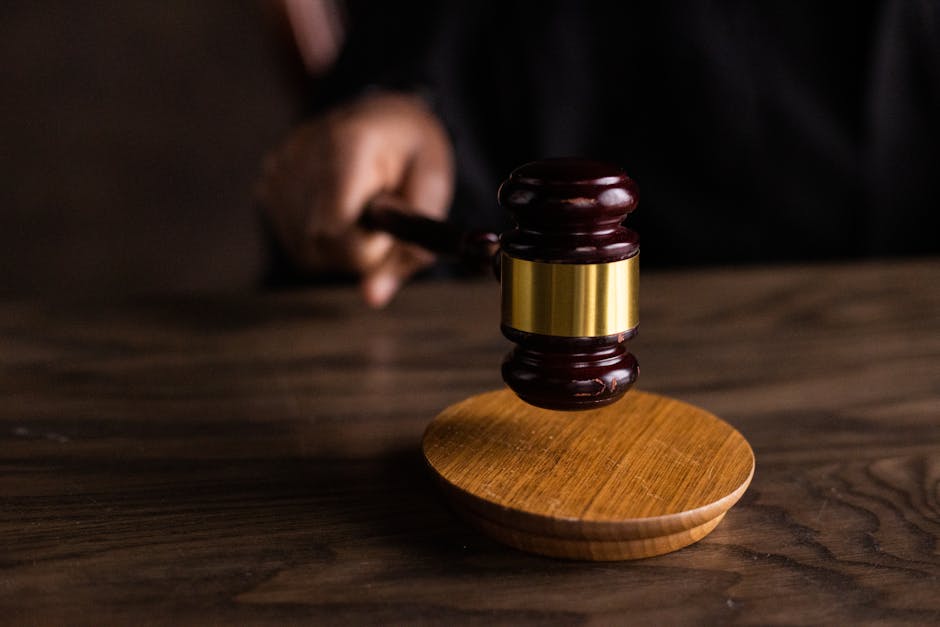When a tenant falls behind on rent, landlords have a legal path to recover what's owed. This process involves steps that must be followed with care and precision. From filing for possession to possibly garnishing wages, understanding these procedures is key for landlords aiming to secure their investments and move forward.
Obtaining a Money Judgment
Securing a Money Judgment Against a Tenant for Unpaid Rent
If you're a landlord grappling with a tenant who has fallen behind on rent, you might be considering securing a money judgment to recover what's owed. It's a straightforward process but necessitates following certain legal steps meticulously. Here's how to go about it.
- File for Possession First
Your initial move should be to gain possession of the property. This means you'll usually start by filing an official complaint against the tenant for failing to pay rent. In this scenario, the main aim of your complaint is typically to get the tenant to vacate the property.1 Remember, this stage is crucial because before you can claim any money, you generally need the property back in your hands.
- Obtain a Money Judgment
After you've successfully regained possession of the property, your next focus should be on securing a money judgment for the unpaid rent. This is where it gets critical; you must take a more personalized approach. You'll need to prove the amount owed beyond just the unpaid rent – this can include damages made to the property, late fees, and any other losses incurred due to the tenant's non-payment.2
Here's the kicker: obtaining a money judgment requires that you personally serve the tenant with the complaint. Simply leaving the notice at the property won't cut it because you're now seeking a monetary sum, not just possession. Hiring a professional process server or using certified mail (with return receipt requested) often ensures that this step is completed adequately.
- Seek Professional Support if Needed
Navigating through court procedures and ensuring laws are correctly followed can be daunting. Don't shy away from seeking help from an attorney who's experienced in landlord-tenant issues, especially if the amount of rent owed is substantial or the situation with your tenant is particularly complex.3
Once you secure a judgment, sprint into action to collect what's owed. This might involve garnishing wages, seizing bank accounts, or other legal methods to enforce the judgment. Always stay informed about your rights and the most effective strategies for collection post-judgment. Remember, knowledge is power, especially in real estate dealings.

Filing for Wage Garnishment
After securing a money judgment, you might wonder, "How do I actually collect the money?" Good news: one effective method is through wage garnishment. Let's dive right into what that involves and how you can navigate this process.
Filing for Wage Garnishment: A Step-by-Step Guide
- Understanding Wage Garnishment: Know that wage garnishment is a legal procedure where a part of the debtor's earnings are withheld by their employer to pay off their debt. This comes into play only after getting a court judgment that confirms the amount the tenant owes you.4
- Requesting a Writ of Garnishment: Your next move is to file a Request for Writ of Garnishment with the court. This is essentially asking the court to issue a formal order that informs the debtor's employer about the garnishment.
- Completing the Filing with a Fee: Filing isn't free. There will be a fee to submit your request to the court.
- The Court's Response: Once filed, a court clerk or judge reviews your request. If approved, they issue the Writ of Garnishment, making your request actionable.
- Serving the Writ: The Writ needs to be officially delivered to the garnishee, aka the debtor's employer. This is typically done through certified mail, but you can also use a sheriff or private process service.5
- Employer Compliance: Once served, the employer is required to start withholding a part of the debtor's wages each pay period. It's crucial for them to comply and send the withheld wages directly to you until the debt is cleared.
- Following up with the Garnishee: If the garnishee (employer) fails to respond or act on the Writ of Garnishment, they could face legal consequences, including being held in contempt of court.
- Being Ready for Objections: The debtor might file objections or claim exemptions. You must be prepared to address these in court, ensuring that the garnishment continues smoothly.
- Receiving Payments: As the garnishment takes effect, you will start receiving payments directly from the employer. These will continue until the full debt amount confirmed by your judgment is paid off.
Always remember, while wage garnishment can be an effective way to recover debts owed, it's key to approach it in a legally precise manner. Ensure all your documentation is carefully filled out and filed, and remain patient but vigilant throughout this process. This targeted forward motion helps guarantee that you eventually reclaim the funds you're owed, moving one step closer to resolving your rental woes.

Understanding Garnishment Laws
Understanding Maryland's wage garnishment laws is crucial when you're venturing into the realm of collecting debts as a judgment creditor. If a debtor isn't willingly paying up, you may feel like you're at a standstill. But Maryland's laws provide a structured, legal pathway to recuperate what's rightfully yours through wage garnishment. Here's why diving into these laws is non-negotiable for your success and peace of mind:
- Garnishment laws spell out who can garnish wages. Knowing if you, as a creditor, fall into this category is the first step towards regaining your funds. Many are surprised to learn that not just anyone can initiate a garnishment; specific criteria and a legal judgment are required.6 This safeguards both parties' rights and ensures fairness in the repayment process.
- Before setting foot into this territory, you will need to distinguish between the types of garnishments available—wages vs. bank accounts—as each comes with its own set of rules and procedures. Maryland's laws offer clear guidelines on initiating these actions, telling you exactly how these distinct processes should be executed to ensure compliance and minimize legal backfire.
- Understanding the exemption rules is another reason you're going to want to be familiar with these laws. It's vital to know upfront what funds are garnishable and what the debtor's rights are in protecting their minimum financial stability. Maryland law protects specific amounts and types of income from being garnished.7 Being ignorant of these details can result in unnecessary legal hurdles and delays.
- Thresholds for how much can be garnished from one's wages are meticulously outlined in Maryland's statutes. Not only does this information guide you in calculating the maximum amount you can legally claim, but it also prevents you from overstepping legal boundaries that could otherwise land you in hot water.
- The step-by-step process spelled out in the laws—including submitting requests, following up with garnishments, and managing post-garnishment procedures—provides a blueprint for navigating these potentially turbulent waters with ease and efficiency.
- Equally important is the satisfaction of judgment—knowing how and when to declare a judgment as satisfied is crucial for closing cases amicably and in compliance with state regulations.8 This affects your reputation positively and ensures that the legal system functions as intended, with settlements being fairly and promptly addressed.
As a judgment creditor looking to recover funds through wage garnishment in Maryland, familiarizing yourself with these specific legal standards isn't just advised, it's essential. It prepares you for what lies ahead, equips you with necessary knowledge to avoid common pitfalls, and facilitates smoother sailings as you work towards recouping your losses. This understanding underscores your adherence to the law—a significant factor that bolsters your credibility and effectiveness as a creditor within the judicial realm.

Mastering the art of recovering debts through legal means marks a significant stride in managing rental properties effectively. With patience, attention to detail, and adherence to legal protocols, landlords can ensure they reclaim owed funds while maintaining fairness and respect in the landlord-tenant relationship. This approach not only secures financial recovery but also reinforces the importance of responsible property management.
- Katz S. The Eviction Process from Start to Finish. NOLO. Published 2022.
- Bray I. When Can a Landlord Sue a Tenant for Damages and Unpaid Rent? NOLO. Published 2022.
- Portman J. Every Landlord's Guide to Finding Great Tenants. NOLO; 2020.
- Reischer R. Collecting a Debt by Garnishing Wages. LegalZoom. Published February 10, 2023.
- Maryland Courts. Wage Garnishment. Published 2023.
- Maryland Code, Commercial Law § 15-601.1.
- Maryland Code, Commercial Law § 15-601.1(b)(1)(ii).
- Maryland Rules, Rule 2-626.
